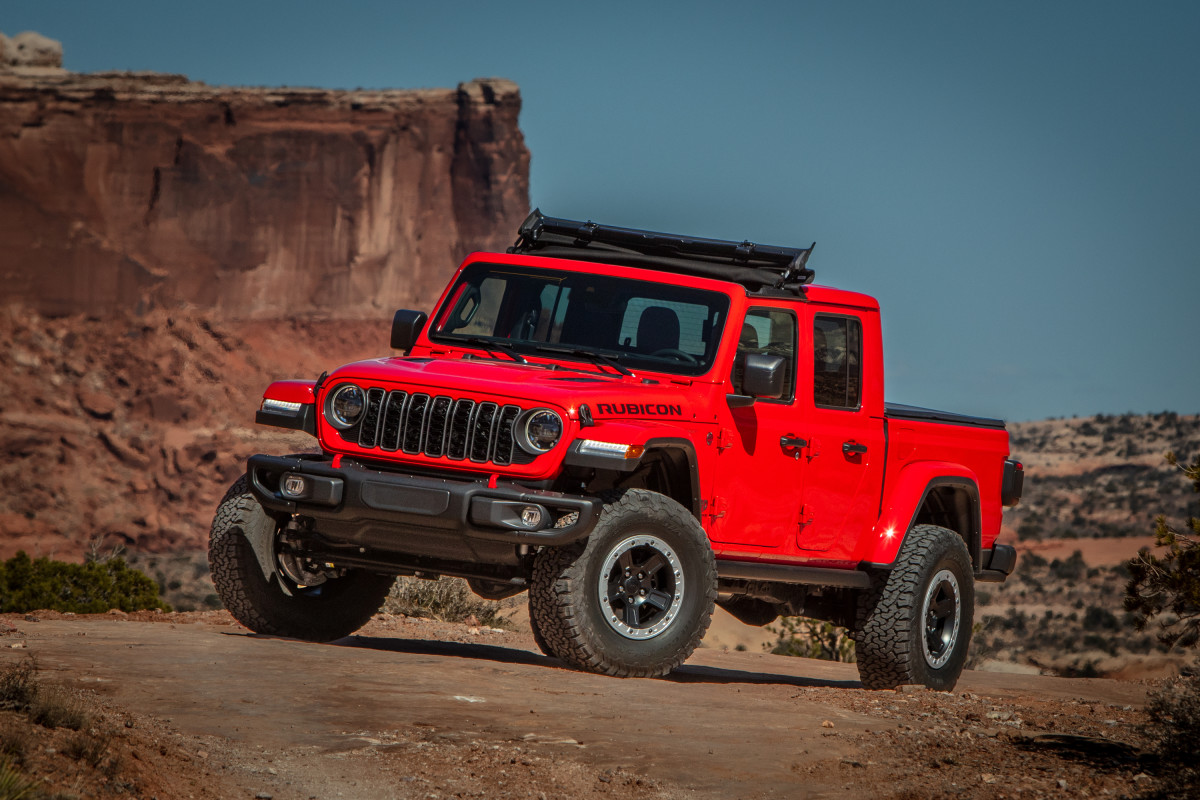How Poor Are Jeep Gladiator Sales?

The Decline of the Jeep Gladiator
When Jeep introduced its Gladiator pickup truck in 2020, it was seen as a groundbreaking addition to the market. Drawing inspiration from the classic CJ-8 Scrambler of the 1980s, the Gladiator promised the ruggedness of a Wrangler with the added benefits of more cargo space and a smoother ride. It was the first Jeep-based pickup that could potentially appeal to a broader audience than traditional trucks. Sales initially soared, reaching nearly 90,000 units in 2022. However, by 2024, sales had dropped significantly, and 2025 hasn’t shown much improvement. What caused this once-popular vehicle to lose its momentum?
Key Features of the Jeep Gladiator
The Gladiator is equipped with four doors, distinguishing it from the two-door CJ-8 Scrambler. Based on the Wrangler Unlimited, it features a longer wheelbase and shares some components like the front suspension, dashboard, and front doors. However, the frame and rear suspension are unique to accommodate the 5.5-foot truck bed and towing capabilities. The Gladiator can tow up to 7,650 pounds, which is higher than the Wrangler Unlimited’s 5,000-pound limit.
Powering the Gladiator is a 3.6-liter V6 engine paired with an eight-speed automatic transmission. This setup produces 285 horsepower and 260 lb-ft of torque. All models come standard with four-wheel drive. The Gladiator is available in nine trim levels, ranging from the base Sport to high-end trims like the Rubicon X and Mojave X. Prices start at $38,695 and go up to $61,100.
The base model includes features such as 17-inch wheels, removable doors, a fold-down windshield, tow hooks, three skid plates, heavy-duty Dana 44 axles, pushbutton start, remote keyless entry, a 12.3-inch touchscreen, Apple CarPlay/Android Auto, a 4G LTE Wi-Fi hotspot, tire pressure monitoring, roll mitigation, and hill-start assist.
A Steep Drop in Sales
Annual sales of the Gladiator have been declining consistently, with only a slight increase in 2025. In 2021, sales reached 89,712 units, but by 2022, they dropped to 77,855. In 2023, sales fell further to 55,188, and in 2024, they were just 42,125. While sales have increased by about 8% this year, the final numbers won’t reach the heights of previous years.
Despite efforts to boost sales through incentives, including offers of up to $20,000 off the Gladiator, these measures haven’t been enough to reverse the trend. The high price point is one of the main issues. Top trims like the Rubicon or Mojave exceed $60,000, making them less attractive compared to competitors like the Chevrolet Colorado ZR2 and Ford Ranger Raptor, which are both cheaper and offer similar performance.
Weaknesses and Competition
The Gladiator has several drawbacks that have affected its appeal. It has a rough ride on pavement, vague steering, and mushy handling. Its longer wheelbase doesn't help, making it less practical for daily use compared to traditional pickups. Additionally, the bed isn't as tall as some competitors, limiting its utility for hauling.
Towing capacity is another area where the Gladiator falls short. While it can tow around 6,000 pounds, the Colorado Z71 can handle 7,700 pounds at a lower price point. The Gladiator also lacks a compelling powertrain option after dropping the 3.0-liter EcoDiesel V6 in 2023. Although a plug-in hybrid version, the 4xe, is expected this year, its impact remains uncertain.
Final Thoughts
The decline in Gladiator sales is unusual in a strong pickup market. While there's a small increase in 2025, it's not enough to signal a full recovery. Now in its sixth year without major changes, the Gladiator may need a refresh, such as a taller bed or improved on-road performance. The arrival of the 4xe could provide some relief, but whether it will be enough to sustain the model remains to be seen. With Stellantis facing challenges, Jeep may need to reconsider the future of the Gladiator.